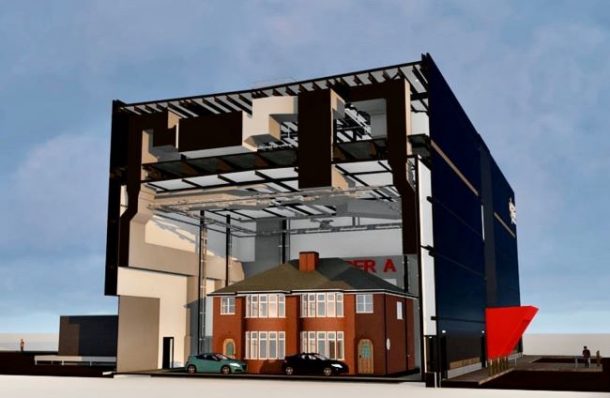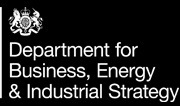
NAA Member News: Automotive Testing Facility at the University of Salford Energy House Laboratories
The University of Salford’s Energy House 2.0 consists of two huge environmental test chambers; each chamber would allow automotive OEMs, suppliers and the aftermarket to undertake research, development and whole vehicle testing for energy efficiency, battery performance, thermal efficiency, etc in a range of climatic conditions.
The University of Salford has been at the forefront of energy efficiency since 1981 and has an established reputation for providing industry with unique facilities & services, access to world-leading researchers, and a strong talent pipeline of graduates.
Energy House Laboratories was initially focused on thermal measurement moving into whole-building energy efficiency, product research and development, and testing for the building industry. But with the emergence of smart meters and electric vehicles, delivering improved energy efficiency now requires a connected and integrated systems approach; it’s only by addressing the heterogenous and connected nature of these systems, devices, and products that we can achieve the energy efficiency needed to address climate change in the 21st Century and beyond.
Energy House Laboratories consists of four integrated research facilities:
Energy House 2.0
Experience gained from both academic and industry research and consultancy enabled the Energy House Laboratories team to conceive and design Energy House 2.0. Construction of this globally unique and world-class facility started in August 2020 with handover in February 2022.
Energy House 2.0 (https://youtu.be/oP3bsXeQKYU) consists of two huge environmental test chambers; each chamber would allow automotive OEMs, suppliers, and the aftermarket to undertake research, development, and whole vehicle testing for energy efficiency, battery performance, thermal efficiency, etc., in a range of climatic conditions.
The climatic conditions that can be simulated in Energy House 2.0 are:
• Temperature -20C to +40C (+/-0.5C)
• Humidity 40-80%
• Rain
• Wind
• Snow
• Solar Radiation (up to 1200 W/m2)
Chamber dimensions: 20m x 19m and 11m high (door access 5m x 5m)
Each environmental chamber has a work area of 20m x 19m x 11m high and is accessed through large 5m wide and 5m tall cargo doors allowing access for vehicles of all shapes and sizes including electric vehicles, cars, vans, buses, tractor units (including sleeper cabs), trailers, motorhomes, caravans (including static), plant vehicles, military vehicles, etc.
Energy House 2.0 will also enable the simultaneous testing of EVs connected to a house and experiencing the full range of climatic conditions as part of an integrated system including Vehicle to Grid (V2G) and Vehicle to Home (V2H).
Smart Meters>Smart Homes Laboratory
Smart Meters sit at the heart of increasingly complex smart-home energy systems integrating domestic energy generations (Solar PV), energy storage (batteries), EV charging, and smart-connected devices and sensors. The UK’s first Smart Meter research laboratory and the Energy House team of researchers and consultants enable and support industry, from start-ups to OEMs, to develop and explore how their products and services can integrate and get the best from Smart Meters. Areas of expertise include energy efficiency and cost-saving, energy aggregation and demand smoothing, EV charging and Vehicle to Grid (V2G).
Thermal Measurement Lab
Thermal efficiency is critical for the EV market, from passenger comfort in cars, buses/coaches, caravans, and sleeper cabs to refrigeration units for the haulage industry: improving thermal efficiency will improve the end-user experience and reduce the energy required to heat or cool vehicle compartments. The University of Salford Thermal Measurement Laboratory has been delivering UKAS accredited (No. 1660) testing and consultancy services and expertise to industry for 40 years including thermal properties of materials, energy conservation, regulation, and test standards.
Energy House 1
Built in 2011 this was the world’s first whole-building environmental test chamber containing a full-sized two-bedroom Victorian terraced house which represents around 20% of the UK housing stock (https://youtu.be/uf6fghQYCVk). Both the environmental chamber and the fully furnished house are packed with sensors that monitor a wide range of variables; this unique facility allows rain, snow, wind, and temperature to be specified to precise levels, enabling the research team and industry partners to thoroughly test products designed to improve the energy efficiency of our homes. Energy House 1 ran the first test of vehicle to grid connectivity.
Energy House Laboratories and the Automotive Industry
Experience gained in the building and energy efficiency sectors has enabled the Energy House Laboratories team to innovate and trial novel test methods, generally used for buildings and elements, to rapidly test the energy efficiency of the thermal performance of electric vehicles. The thermal performance of an electric vehicle has a direct impact on vehicle range; a more thermally efficient driver/passenger compartment will reduce the energy used by climate control systems and result in enhanced vehicle range, improved thermal comfort and end-user experience in both hot and cold climates while also placing less stress on the grid when EVs are being pre-heated/cooled.
The University of Salford is working with leading companies such as Octopus Energy and exploring the use of smart meter enabled technology to automate EV charging using Time of Use Tariffs, and working with Honda on a project exploring Vehicle to Grid and Vehicle to Home (https://www.cibsejournal.com/technical/plugging-in-numbers-integrating-cars-with-all-electric-homes/) and testing on-street EV charging options such as GREENMOLE (https://green-mole.co.uk/ev-charging-for-terraced-households/).
For more information, please contact Mike Brown m.j.brown2@salford.ac.uk





